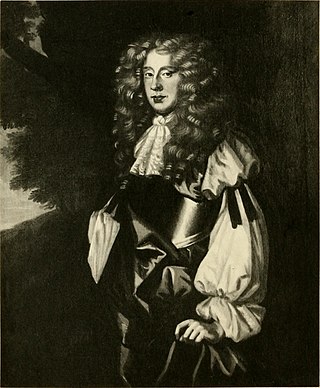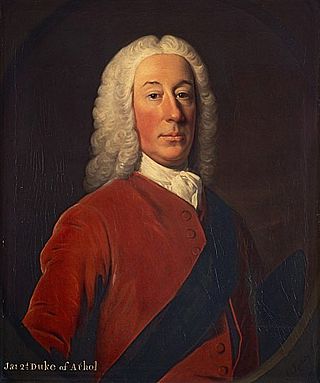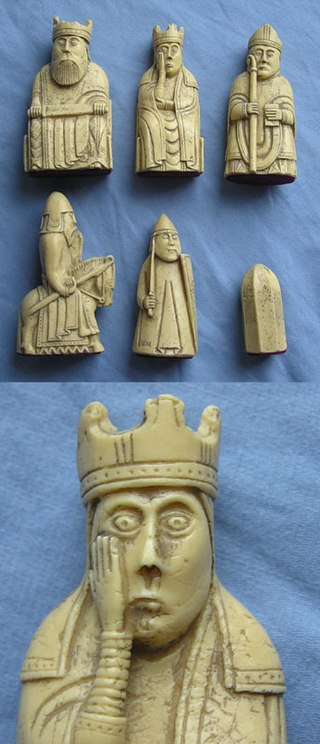| | | | | | | | Earl of Atholl (fourth creation), 1367 |
|
| | | | | | | | Robert Stewart
1316–1390
1st Earl of Atholl, Earl of Strathearn, Later Robert II, King of Scots | | | | |
|
| | | | | | | | | | | | | | | | | | | | |
| | | | | | | | | |
| | | | | | | | | | | | | Earl of Atholl (sixth creation), 1403 | | Earl of Atholl (seventh creation), 1404 |
|
| | | | | | | | John Stewart
c. 1337–1406
2nd Earl of Atholl, Earl of Carrick, Later Robert III, King of Scots | | Robert Stewart
1340–1420
Duke of Albany, Earl of Atholl | | Walter Stewart
c. 1360–1437
Earl of Atholl, Earl of Strathearn, Earl of Caithness |
|
| | | | | | | | Earldom of Atholl (fourth creation) merged in the crown, 1390 | | Earldom of Atholl (sixth creation) expired on the death of Robert III, 1406 | | Earldom of Atholl (seventh creation) attainted, 1404 |
|
| | | | | | | | | | | | |
| | | | | |
| | | | Earl of Atholl (fifth creation), 1398 | | | | | |
|
| | | | David Stewart
1378–1402
Duke of Rothesay, Earl of Atholl, Earl of Carrick | | James I
1394–1437
King of Scots | | Joan Beaufort
c. 1404–1445
Queen of Scots | | James Stewart
"Black Knight of Lorn"
1399–c. 1451 |
| | |
| | | | Earldom of Atholl (fifth creation) extinct, 1402 | | | | | | | | | | | | |
| | | |
| | | | | | | | | | | | Earl of Atholl (eighth creation), c. 1457
Lord of Balveny, 1460 |
|
| | | | | | | | | | | | John Stewart
c. 1437–1442–1512
1st Earl of Atholl |
|
| | | | | | | | | | | | | | | |
|
| | | | | | | | | | | | John Stewart
after 1475 – before 1522
2nd Earl of Atholl |
|
| | | | | | | | | | | | | | | |
|
| | | | | | | | | | | | John Stewart
1507–1542
3rd Earl of Atholl |
|
| | | | | | | | | | | | | | | |
|
| | | | | | | | | | | | John Stewart
"the fair"
d. 1579
4th Earl of Atholl |
|
| | | | Earl of Atholl (ninth creation), 1596 | | | | | | | | | | | Lord Murray of Tullibardine, 1604, Earl of Tullibardine (first creation) and Lord Murray, Gask and Balquhidder, 1606 |
|
| | | | John Stewart
1566–1603
1st Earl of Atholl, 6th Lord Innermeath | | Marie Ruthven
(d. after 1605) | | John Stewart
1563–1595
5th Earl of Atholl | | John Murray
(c. 1550 – c. 1609)
1st Earl of Tullibardine, Lord Murray of Tullibardine, and Lord Murray, Gask and Balquhidder |
| | | |
| | | | | | | | | | | | | | Earldom of Atholl (eighth creation) extinct, 1625 | | | | | |
|
| | | | | | | | | | | | | | | | | | | | | | | | |
| | | | | | | | | | | | | |
| | | | | | | | | | | | | | | | | | | Earl of Tullibardine (second creation), 1628 |
|
| | | | James Stewart
d. 1625
2nd Earl of Atholl | | Dorothea Stewart | | William Murray
c. 1574–1627
2nd Earl of Tullibardine, Lord Murray of Tullibardine, and Lord Murray, Gask and Balquhidder | | Patrick Murray
1578–1644
1st Earl of Tullibardine, Lord Murray of Tullibardine, and Lord Murray, Gask and Balquhidder |
| |
| | | | Earldom of Atholl (ninth creation) extinct, 1625 | | | | | | | Resigned Earldom of Tullibardine and lordships in favour of his brother, 1626 | | | | | |
|
| | | | | | | | | | | | | | | | | | | | | |
| | |
| Baron Strange (fourth creation), 1628 | | | | | | | | | | Earl of Atholl (tenth creation), 1629 | | | | | |
|
James Stanley
1607–1651
7th Earl of Derby, 1st Baron Strange | | | | | | | | | | John Murray
c. 1610–1642
1st Earl of Atholl | | James Murray
1617–1670
2nd Earl of Tullibardine, Lord Murray of Tullibardine, and Lord Murray, Gask and Balquhidder |
|
| | | | | | | | | | | | | | | | | | | | | | |
| | | | | | | | |
| | | | | | | | | | | | | | Marquess of Atholl, Earl of Tullibardine, Viscount of Balquhidder, and Lord Murray, Balveny and Gask, 1676 | | | | | | | | | | |
| | | | |
Charles Stanley
1628–1672
8th Earl of Derby, 2nd Baron Strange | | | | | | Amelia Ann Sophia Stanley
1633–1702/03 | | John Murray
1631–1703
1st Marquess of Atholl, 2nd Earl of Atholl, 3rd Earl of Tullibardine, Lord Murray of Tullibardine, and Lord Murray, Gask and Balquhidder | | Patrick Murray
(c. 1644 – c. 1661–1664)
styled Lord Murray and Gask | | James Murray
(c. 1652 – c. 1664–1670)
styled Lord Murray and Gask |
| |
| | | | | | | | | | | | | | | | | | | | | | | | | | |
| | | | | | | | | | | | | | | | |
| | | | | | | | | | | | | | Earl of Tullibardine, Viscount Glenalmond and Lord Murray, 1696
Duke of Atholl, Marquess of Tullibardine, Earl of Strathtay and Strathardle Viscount of Balwhidder, Glenalmond and Glenlyon, Lord Murray, Balveny and Gask, 1703 | | | | | | Earl of Dunmore, Viscount of Fincastle, Lord Murray of Blair, Moulin and Tillimet, 1686 |
|
William Richard George Stanley
c. 1655–1702
9th Earl of Derby, 3rd Baron Strange | | James Stanley
1664–1736
10th Earl of Derby, 6th Baron Strange | | | | | | John Murray
1660–1724
1st Duke of Atholl, 2nd Marquess of Atholl | | | | | | Charles Murray
1661–1710
1st Earl of Dunmore, Viscount of Fincastle, and Lord Murray of Blair, Moulin and Tillimet |
|
| | | | | | | | | | | | | | | | | | | | | | | | | | | | | | | | |
| | | | | | | | | | | | | | | | | | | | |
Henrietta Stanley
1687–1718
4th Baroness Strange | | John Murray
1684–1709
styled Marquess of Tullibardine | | William Murray
1689–1746
styled Marquess of Tullibardine | | James Murray
1690–1764
2nd Duke of Atholl, 7th Baron Strange | | George Murray
1694–1760 | | John Murray
1685–1752
2nd Earl of Dunmore, Viscount of Fincastle, and Lord Murray of Blair, Moulin and Tillimet | | William Murray
1696–1756
3rd Earl of Dunmore, Viscount of Fincastle, and Lord Murray of Blair, Moulin and Tillimet |
|
| | | | | | | | | Attainted and excluded from succession | | | | | | | Attainted and excluded from succession | | | | | | | | | |
|
| | | | | | | | | | | | | | | | | | | | | | | | | | | | | | | |
| | | | | | | | | | |
Henrietta Ashburnham
c. 1716–1732
5th Baroness Strange | | John Murray
1728–1729
styled Marquess of Tullibardine | | James Murray
1735–1736
styled Marquess of Tullibardine | | Charlotte Murray
1731–1805
8th Baroness Strange | | John Murray
1729–1774
3rd Duke of Atholl | | | | | | John Murray
1730–1809
4th Earl of Dunmore, Viscount of Fincastle, and Lord Murray of Blair, Moulin and Tillimet |
| |
| | | | | | | | | | | | | | | | | | | | | | | | | | | | | | | |
| | | | | | | | | | | | | | | |
| | | | | | | | Earl Strange and Baron Murray of Stanley in the County of Gloucester, 1786 | | | | | | | | | | | Baron Dunmore, 1831 | | | | | |
|
| | | | | | | | John Murray
1755–1830
4th Duke of Atholl, 1st Earl Strange and Baron Murray of Stanley, 9th Baron Strange | | | | | | George Murray
1761–1803 | | George Murray
1762–1836
5th Earl of Dunmore, Viscount of Fincastle, and Lord Murray of Blair, Moulin and Tillimet, 1st Baron Dunmore | | Alexander Murray
1764–1842 |
|
| | | | | | | | | | | | | | | | | | | | | | | | | | | | | | | |
| | | | | | | | | | |
| | | | | | | | | | Baron Glenlyon, of Glenlyon in the County of Perth | | | | | | | | | | | | | | | | | | | |
|
Charlotte Murray
1775–1832
m. Adam Drummond, 7th Baron of Megginch | | John Murray
1778–1846
5th Duke of Atholl, 2nd Earl Strange and Baron Murray of Stanley, 10th Baron Strange | | James Murray
1782–1837
1st Baron Glenlyon | | | | | | George Murray
1784–1860 | | | | | | | | | | |
|
| | | | | | | | | | | | | | | | | | | | | | | | | | | | | | | |
|
John Drummond
1803–1889
8th Baron of Megginch | | | | | | George Augustus Frederick John Murray
1814–1864
6th Duke of Atholl, 11th Baron Strange, 3rd Baron Murray of Stanley, 2nd Baron Glenlyon | | | | | | George Edward Murray
1818–1854 | | Alexander Edward Murray
1804–1845
6th Earl of Dunmore, Viscount of Fincastle, and Lord Murray of Blair, Moulin and Tillimet, 2nd Baron Dunmore | | Virginius Murray
1817–1861 |
|
| | | | | | | | | | | | | | | | | | | | | | | | | | | | | | | | |
| | | | | |
Malcolm Drummond
1856–1924
9th Baron of Megginch | | | | | | John James Hugh Henry Stewart-Murray
1840–1917
7th Duke of Atholl, 12th Baron Strange, 4th Baron Murray of Stanley, 3rd Baron Glenlyon | | George Herbert Murray
1849–1936 | | Douglas Stuart Murray
1853–1920 | | Charles Adolphus Murray
1841–1907
7th Earl of Dunmore, Viscount of Fincastle, and Lord Murray of Blair, Moulin and Tillimet, 3rd Baron Dunmore | | Reginald Murray
1846–1925 |
|
| | | | | | | | | | | | | | | | | | | | | | | | | | | | | | | | | |
| | | | | |
| | | | | John George Stewart-Murray
1871–1942
8th Duke of Atholl and Marquess of Tullibardine, 13th Baron Strange, 5th Baron Murray of Stanley, 4th Baron Glenlyon | | James Thomas Stewart-Murray
1879–1957
9th Duke of Atholl, 14th Baron Strange, 6th Baron Murray of Stanley, 5th Baron Glenlyon | | George Evelyn Pemberton Murray
1880–1947 | | George Murray
1884–1940 | | Alexander Edward Murray
1871–1962
8th Earl of Dunmore, Viscount of Fincastle, and Lord Murray of Blair, Moulin and Tillimet, 4th Baron Dunmore | | Arthur Charles Murray
1882–1964 |
|
| | | | | | | | | Earldom of Strange and Baronies of Murray and Glenlyon extinct and Barony of Strange abeyant, 1957 | | | | | | | | | | | | | | | | | | | | |
|
| Baron Strange (fourth creation) abeyance terminated, 1965 | | | | | | | | | | | | | | | | | | | | | | | | | | | | | | | | |
| | | | |
John Drummond
1900–1982
15th Baron Strange, 10th Baron of Megginch | | | | | | | | | | George Anthony Murray
1907–1945 | | | | | | | Edward David Murray
1908–1940
styled Viscount Fincastle | | Reginald Arthur Murray
1911–1981
10th Earl of Dunmore, Viscount of Fincastle, and Lord Murray of Blair, Moulin and Tillimet | | Kenneth Randolph Murray
1913–1995
11th Earl of Dunmore, Viscount of Fincastle, and Lord Murray of Blair, Moulin and Tillimet |
|
| Baron Strange (fourth creation) abeyant, 1982–1986 | | | | | | | | | | | | | | | | | | | | | | | | | | | | | | | | |
|
| | | | | | | | | | | | | | | | | | | | | | | | | | | | | | | | | | | |
|
Jean Cherry Drummond
1928–2008
16th Baroness Strange, 11th Baroness of Megginch | | | | | | | | | | George Iain Murray
1931–1996
10th Duke of Atholl | | John Murray
1929–2012
11th Duke of Atholl | | John Alexander Murray
1939–1980
9th Earl of Dunmore, Viscount of Fincastle, and Lord Murray of Blair, Moulin and Tillimet, 5th Baron Dunmore | | | | | | | | | |
|
| | | | | | | | | | | | | | | | | | | | | | Barony Dunmore extinct, 1980 | | | | | | | | | | |
| | | | | |
Adam Humphrey Drummond
b. 1953
17th Baron Strange, 12th Baron of Megginch | | | | | | | | | | | | | | Bruce George Ronald Murray
12th Duke of Atholl
b. 1960 | | | | | | Malcolm Kenneth Murray
b. 1946
12th Earl of Dunmore, Viscount of Fincastle, and Lord Murray of Blair, Moulin and Tillimet | | Geoffrey Charles Murray
b. 1949 |
|
| | | | | | | | | | | | | | | | | | | | | | | | | | | | | | | Heir presumptive to the Earldom of Dunmore |
| | | | |
John Adam Humphrey Drummond
b. 1992 | | | | | | | | | | | | | | Michael Bruce John Murray
b. 1985
styled Marquess of Tullibardine | | David Nicholas George Murray
b. 1986 |
|
| Heir apparent to the Barony of Strange | | | | | | | | | | | | | | Heir apparent to the Dukedom of Atholl |
|















